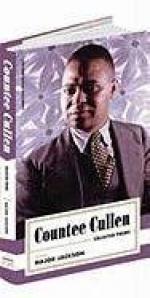|
This section contains 366 words (approx. 2 pages at 300 words per page) |

|
SOURCE: "The Proof of the Poet," in Opportunity, Vol. 13, No. 12, December, 1935, pp. 381-82.
In the following excerpt, Boie offers a generally positive assessment of the verse in The Medea, and Some Poems.
"Some Poems" [in The Medea, and Some Poems] include a number of sonnets which are moving in the blending of emotion with thought, and almost perfect in form. The sonnet beginning "These are no wind-blown rumors," for example, contains phrases of inevitable beauty, of turns that charge remembered feelings with fresh intensity—"I know … That spring is faithless to the brightest bird." Its images are original and striking—
At beauty's birth the scythe was honed, the nail
Dipped for her hands, the cowls clipped for her face.
At the same time this and some of his other sonnets reveal flaws which seem to fleck most modern poets' use of this restricted and very conventional form—phrases...
|
This section contains 366 words (approx. 2 pages at 300 words per page) |

|


